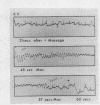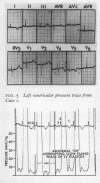Abstract
First recognized in 1957, the surdo-cardiac syndrome includes congenital deafness, prolonged QT interval, and a high incidence of syncope and sudden death. Haemodynamic studies in two patients were normal except for an abnormal wave during left ventricular diastole probably related to abnormal left ventricular relaxation. The syncopal attacks are based on cardiac arrhythmias: both ventricular fibrillation and asystole may occur. Abnormal adrenergic stimulation of the heart is probably responsible. Propranolol appears to be effective in preventing the syncopal attacks. Artificial pacemaking provoked ventricular fibrillation in one patient and seems contraindicated.
Full text
PDF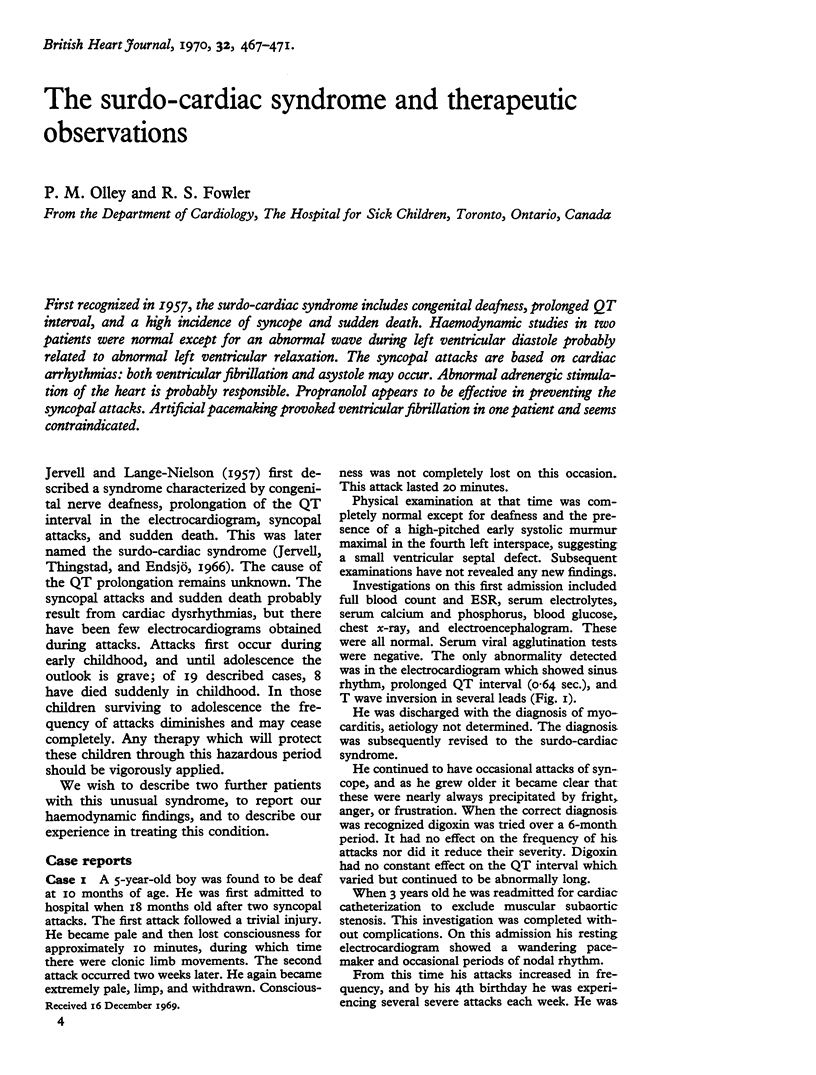
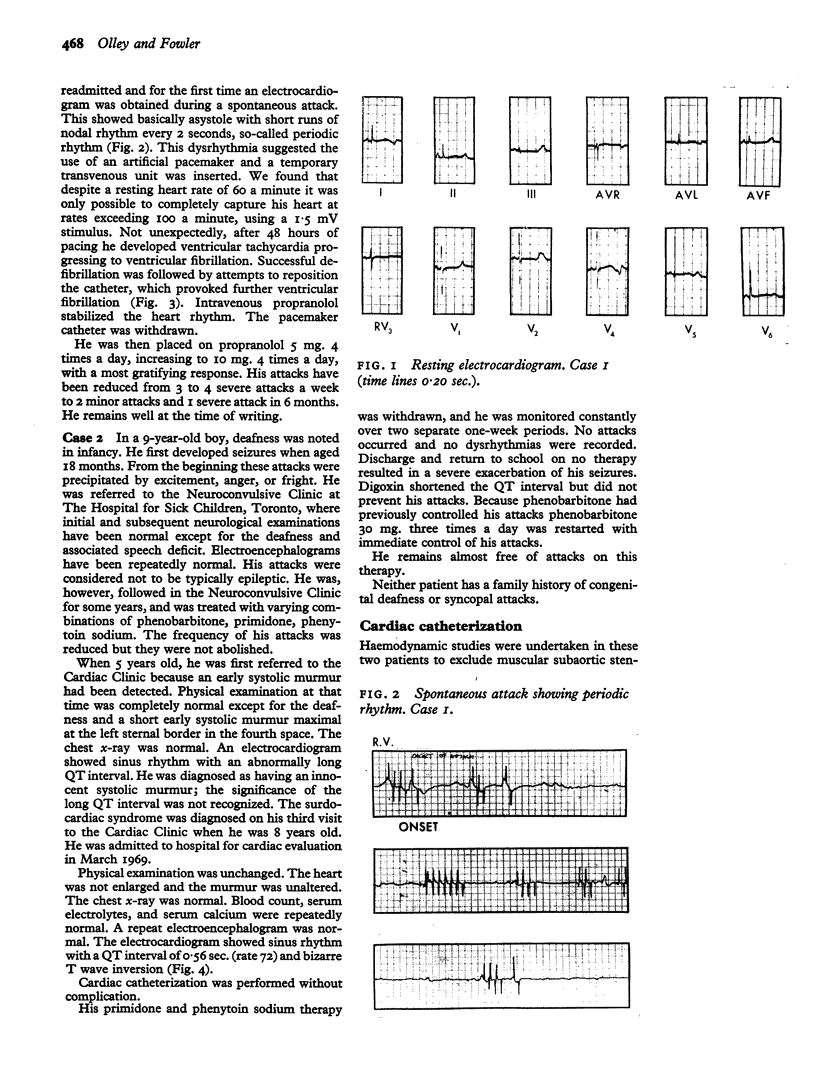
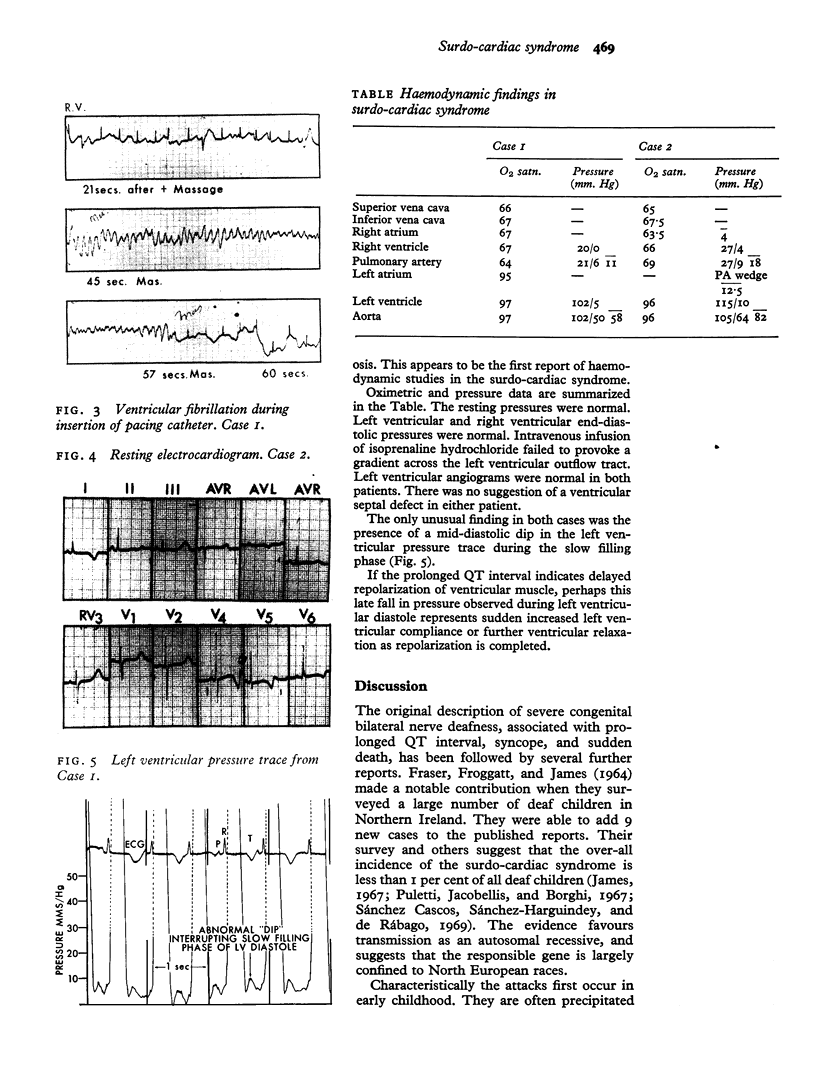
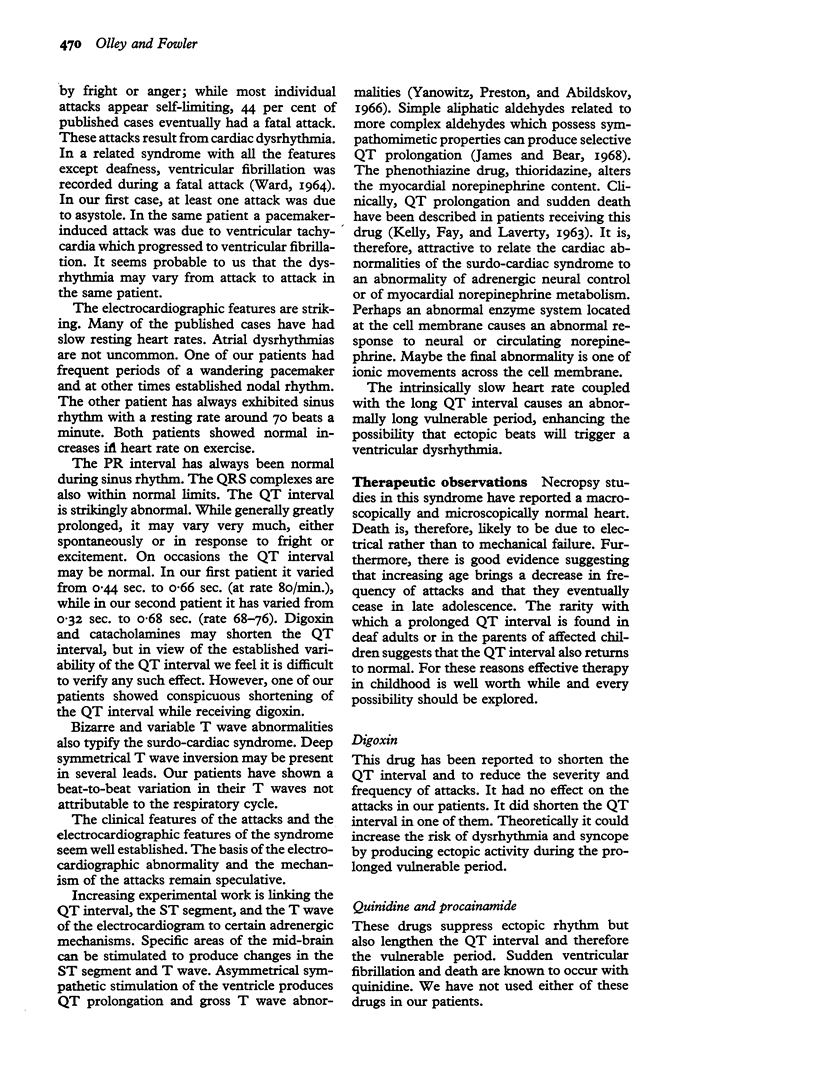
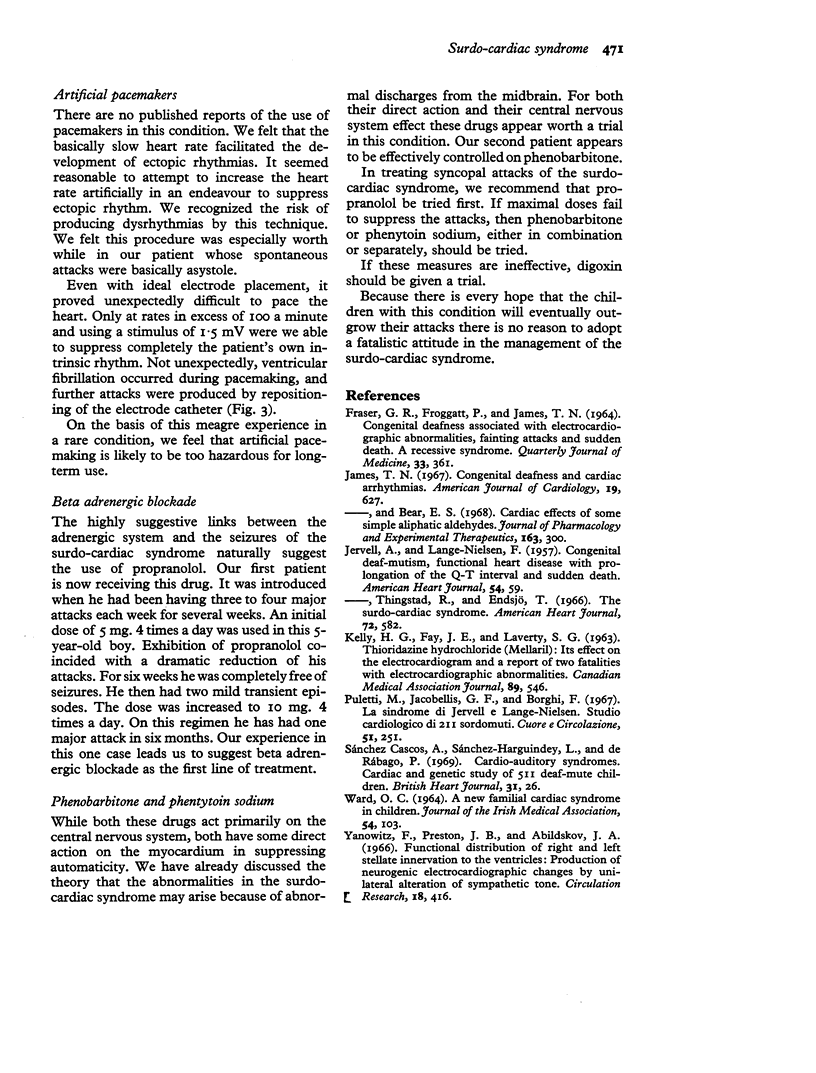
Images in this article
Selected References
These references are in PubMed. This may not be the complete list of references from this article.
- James T. N. Congenital deafness and cardiac arrhythmias. Am J Cardiol. 1967 May;19(5):627–643. doi: 10.1016/0002-9149(67)90467-5. [DOI] [PubMed] [Google Scholar]
- KELLY H. G., FAY J. E., LAVERTY S. G. THIORIDAZINE HYDROCHLORIDE (MELLARIL): ITS EFFECT ON THE ELECTROCARDIOGRAM AND A REPORT OF TWO FATALITIES WITH ELECTROCARDIOGRAPHIC ABNORMALITIES. Can Med Assoc J. 1963 Sep 14;89:546–554. [PMC free article] [PubMed] [Google Scholar]
- Puletti M., Jacobellis G. F., Borghi F. La sindrome di Jervell e Lange-Nielsen. Studio cardiologico di 211 sordomuti. Cuore Circ. 1967 Dec;51(6):251–261. [PubMed] [Google Scholar]





